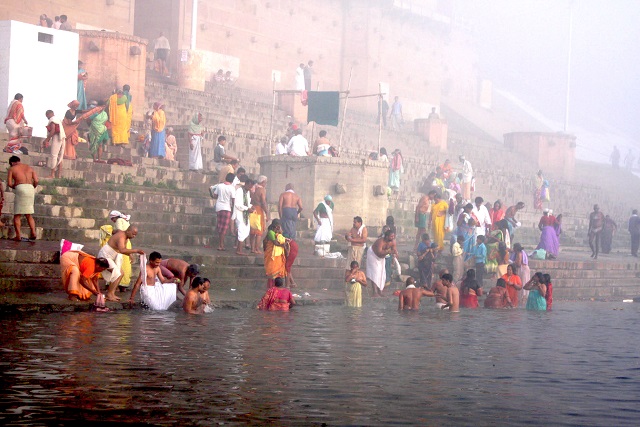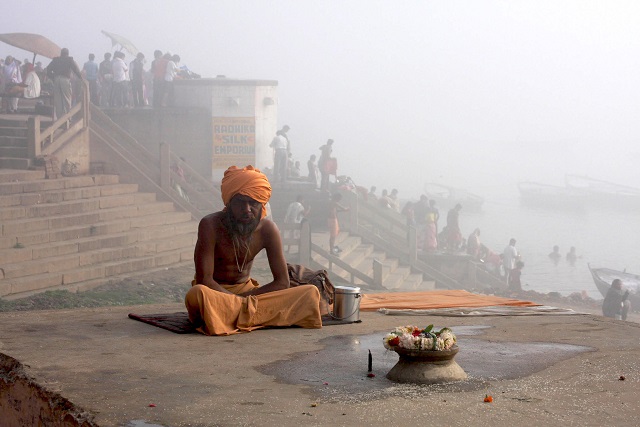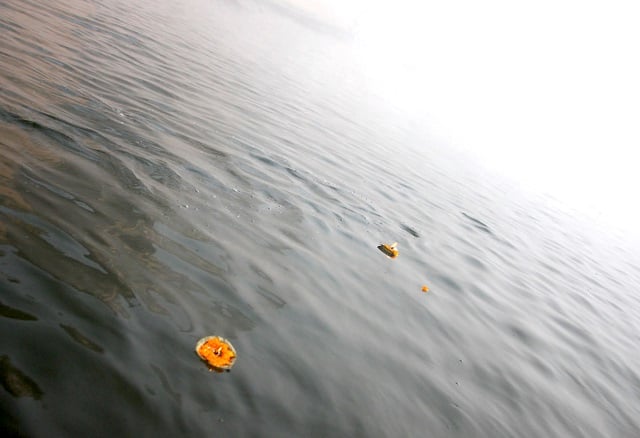
Our small group hustled through the busy, narrow streets of Varanasi, making a beeline for the great mother river of India and the boat that would carry us on our early morning journey.
We were close to the end of the grand four-week trip, and by this time, many of our contingent were weary both of one another and early morning activities that required focused attention.
There were those, too, who were simply not that curious about this river that teemed with bathers, candles, and human waste.
It was barely light, but the little streets we crossed hummed with activity: barber shops, vendors, tailors, dentists in their little outdoor offices, and, of course, the gentle, brown cows meandering everywhere in front, around, and behind us. These Indian cows had an equanimous look on their faces as they joined the humans on the street, with frequent detours to devour all the discarded plastic and garbage. I came to love these Indian cows for their constancy and calm, and I worried about them, too.
As night oozed slowly into morning, we all kept pretty quiet, carefully watching our footing and the cows in the murky light, and trying to avoid the young, human scavengers in rags beginning their day. When I first saw the river, I remember feeling surprised it looked so ordinary and so dirty—this body of water that all Indians considered so sacred, where they came by the thousands to anoint themselves again and again before they died.

Stumbling across rocks and stones, we finally found our boatman.
Some of our group tugged nervously at their jackets, pulling them closer and closer about their bodies. It seemed they were afraid: stories dancing in their heads of squalid toxic waters that could make a Westerner “sick as a dog.” These waters were blackish green, smelling of old clothes, animals, and garbage. Thick fog hung over the river, and we heard voices in sing-song rhythm and the slapping of oars on the water; very little around us was visible. The sky began to get lighter—dark blue turning to misty pale grey as we were finally launched onto the river.
Water lapped against our boat and no one spoke. I breathed in slowly, waiting for the ritual to unfold. I saw small, round votive candles floating in the grimy water, resembling little beacons bobbing around our boat. A small vessel moved slowly and silently alongside, completely equipped with trinkets, fabrics, postcards, incense, and beads—a floating souvenir shop!
We pushed resolutely forward.
Before too long, we could make out the ghats, the long flights of stone steps rising from the big river, and it seemed as though a dusty antique painting had suddenly come alive then—an epic congregation splashed joyously in the water, some fully dressed, others in very little at all.
The women’s saris shouted out with brilliant color—purples, reds, yellows, and blues, with so many sparkles—as they bent down to gather the murky water in their hands and splash themselves with much laughter. They washed clothes, their children, and themselves. I saw many men of different ages standing quietly staring into space, their hands in “Namaste” gesture, and children dunking themselves playfully in the dark waters. Our boat progressed slowly and this display continued in the mist, sometimes more clear to the eyes than others. At ghat after ghat, the Indians celebrated the river and themselves. Washing, chanting, praying…It was still and peaceful.
This was a ritual of gratitude, I figured, a Hindu celebration of all of life. I temporarily forgot the gnawing desperation of all the beggar children, and saw now the urgency of grabbing ahold of life and rising above the muck so we might know our own goodness and connection to the divine.
The banks were dense with people, breathing brilliant color, joy, and life force through the grey mist. I took picture after picture, knowing they could never capture this passionate human mosaic, and my fellow travelers stared off into the distance with their mask-like faces.
The Ganges lies at the end of the pilgrimage; Indians journey here continually from all parts of this vast country to bathe, wash clothing, celebrate, or die and be cremated here. Those who come often carry away the sacred mud of the Ganges in brass vessels, and because journeys are always circular, they return with the ashes of loved ones to deposit them in Mother Ganga.
One of the cremation ghats is called Manikarnika, and it smoldered quietly as our boat passed, the pyre holding the fire within until a new corpse arrived. Most of our group looked away, I noticed. I imagined Manikarnika always smoldering, always alive and ready. The fire that breaks us down is intrinsic energy, perpetual and red at the center, and on this grey damp morning the wisps of cremation smoke comforted me, reminding me of our ongoing journey.
Though I never saw an actively burning pyre or ritual immersion of corpse into the river, anointed with sandalwood and decked with marigold garlands, I felt complete and at home, as I breathed in the smoky air surrounding this place.
In the Hindu mind, we are not on a journey from life to death, but are rather making a mysterious transition from life to life. I was beginning to see things just a bit differently now both inside and out.

Everything that arises passes away.
In dense fog on the Ganges, I saw that every thing we witness is impermanent, like the sticks of camphor and heavy, sweet incense that burn forever in the temples of the south, disappearing as they smolder, or the garlands of brilliant yellow marigolds draped over Ganesha and Hanuman that eventually wither and die in all the temples. The shifting and changing of color and form is as beautiful and mysterious as death.
I was sure I could see the people’s joy on the riverbanks, and then it would be swallowed and there would be soupy grayness, moisture everywhere, green-black stagnant river water below with that flock of tiny burning candles winking at us.
What did these little lights signify? They always seemed like quiet little prayers to me.
~
Relephant read:
A Lesson from India on Right Time & How we can Apply it Every Day.
~
Author: Mag Dimond
Images: Author’s Own
Editor: Khara-Jade Warren
Copy Editor: Leah Sugerman
Social Editor: Sara Kärpänen






Read 1 comment and reply